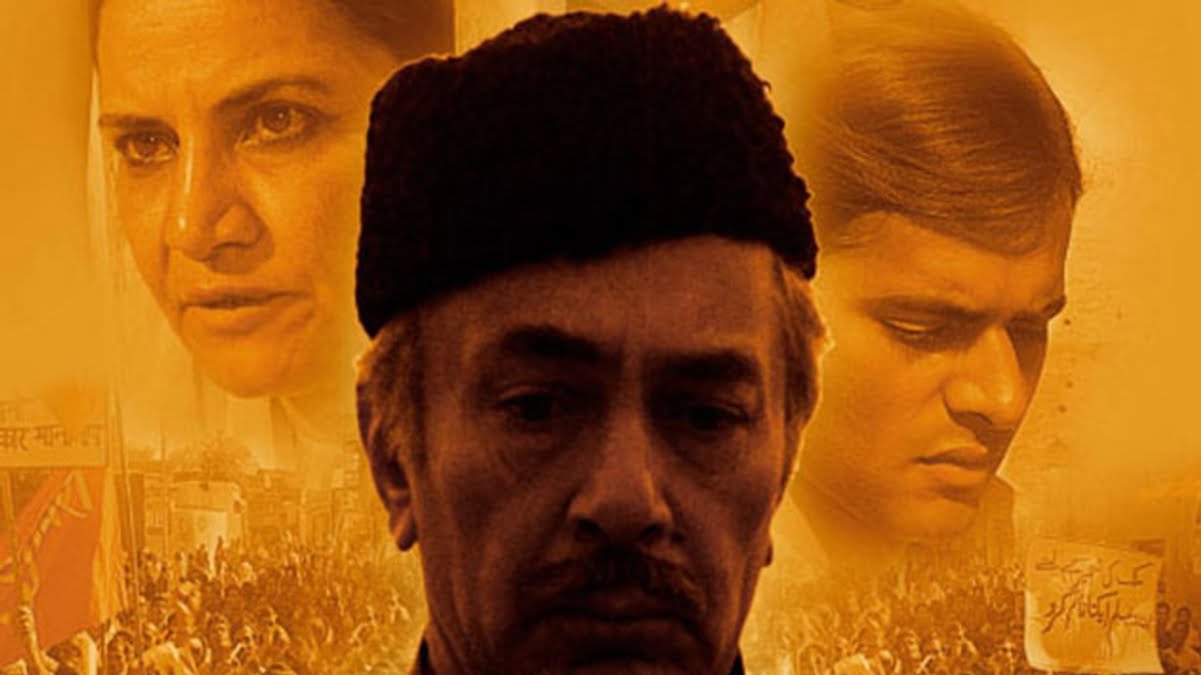The partition of the Indian subcontinent in 1947 can be understood in two ways–‘partition as political fact’, and ‘partition as violence’. Partition as political fact depicts the dominant discourse on partition historiography, which deals with grand narratives of the political fact of division. M S Sathyu’s ‘Garm Hava’, released in 1973, is a cinematic experience of ‘partition as violence’ which deals with the often neglected subject of ‘violence’, physical and psychological.
M S Sathyu’s ‘Garm Hawa’, released in 1973, is a cinematic experience of ‘partition as violence’ which deals with the often neglected subject of ‘violence’, physical and psychological.
Also read: Podcast: Naam Kya Bataayaa? – By Main Bhi Muslim
Mostly, the partition cinema (and discourse on the ‘partition as violence’) portrays intense violence in the form of riots, loot, rapes etc. But Garm Hava delineates a subtler form of violence, the violence of uprooting from an ancestral haveli, betrayal from prospective spouses, failure of state machinery to protect economic interests, and so on. Garm Hava steers away from the mainstream grandeur accounts of partition to sculpt the most common issue faced by the people after the partition – belongingness and identity crisis.
Drawing upon the subaltern partition historiography of Garm Hava, this essay unfolds the ambivalence of ‘belonging’ faced by Indian Muslims after the partition. The aim is to identify the shift (if any) from the above discourse, in contemporary times.
Garm Hava‘s protagonist, Salim Mirza, represents thousands of Indian Muslims who were torn apart in the conundrum of migration after the partition. Unlike the common assumption that all the Muslims will conveniently migrate to Pakistan, the story of Salim Mirza highlights the neglected theme of how migration was not as smooth as the political leadership initially thought.
The pain of being uprooted from one’s ancestral land and having to move to an uncertain strange land created fear and frustration in the Muslims who had ruled the subcontinent for 500 years. As pointed out by Renan, ‘we love the house that we have built, and will hand down to our descendant.’
Vehement refusal of ‘Daddu’ to leave the ancestral Haveli where she first came as a child bride portrays her emotional attachment to the place. The panoramic views of Fatehpur Sikri and Taj Mahal underline the sense of belonging that Salim Mirza had with the city, which is flaunted even today as national pride, the Muslim art and culture. Salim Mirza was a tree in the hot winds (Garm Hava) that refused to be uprooted.
Though Salim Mirza (like thousands of Muslims) chose to stay in India, he was constantly pushed to prove his allegiance to the country. For instance, Garm Hawa shows how the nationalised bank refused to give him credit; he faced suspicion while searching for a rented accommodation, and the state implicated him under espionage charges for sharing correspondence across the border with his relatives.
There was an environment of extreme fear regarding the ‘shifting loyalties’ of Muslims in post-partition India that Garm Hawa portrays. The dominant political discourse of the time also echoed this fear.
Also read: The Status of India’s Muslim Women Amid State-Directed Violence and COVID-19
In one such occasion, Sampurnanand wrote, “If god forbid, there was ever a war between India and Pakistan, our worries will be greatly increased, for it is not impossible that the sympathies of our Muslim population will veer towards Pakistan.”
Likewise, Govind Ballabh Pant proclaimed that “Indian Muslims should ‘realise clearly’ what loyalty to the nation would mean if Pakistan invaded India. Every Muslim in India would be required to shed his blood fighting the Pakistani hordes, and each one should search his heart now, and decide whether he should migrate to Pakistan or not.”
Garm Hava portrays how even Gandhi echoed this fear and declared that “they (Indian Muslims) must understand that if they are to live with the Hindus as brothers, they must be loyal to the Indian Union, not to Pakistan.” In response, on many occasions, the Muslim leaders affirmed the loyalty of Indian Muslims to India.

The above construction of national identity at the time of partition where the ‘Hindus’ became ‘natural’ citizens and Muslims occupied dual fidelity is visible in the citizenship discourse and in Garm Hava.
Neerja Jayal argues that the constitutional provision on citizenship was contaminated on ethnic lines as against its secular claim. A close reading of Article 7, also known as ‘obnoxious clause’ evidently discriminated against the Muslims returning to India post their migration to Pakistan. It was pre-supposed that these ‘migrants’ had an allegiance with Pakistan and had returned to sabotage the independence of India.
Even though Garm Hava ends with the Nehruvian vision of brotherhood, hot winds have weakened this optimism. Continuous affirmation of loyalty by the Muslims has continued till today. Recent development in the citizenship laws of India requires resident Muslims in India to prove their claims of citizenship.
Even though Garm Hawa ends with the Nehruvian vision of brotherhood, hot winds have weakened this optimism. Continuous affirmation of loyalty by the Muslims has continued till today. Recent development in the citizenship laws of India requires resident Muslims in India to prove their claims of citizenship.
In protest, India’s largest minority group came out in public to pronounce that they are Indians first, that they believe in the Constitution, the flag and the national anthem. This ‘oath of allegiance’ has considerable resemblance to the ones taken after the partition. No one is certain, what it will take for the Indian Muslims to naturally ‘belong’ to India thereby emphasising on their ambivalent national identity.
Geeta is a postgraduate student from Azim Premji University. Currently, she is working in the office of Member of Parliament Mr Gajendra Singh Shekhawat. She can be found on LinkedIn.
Featured Image Source: DailyMotion




